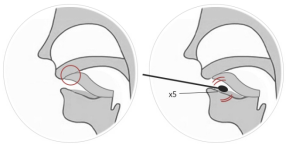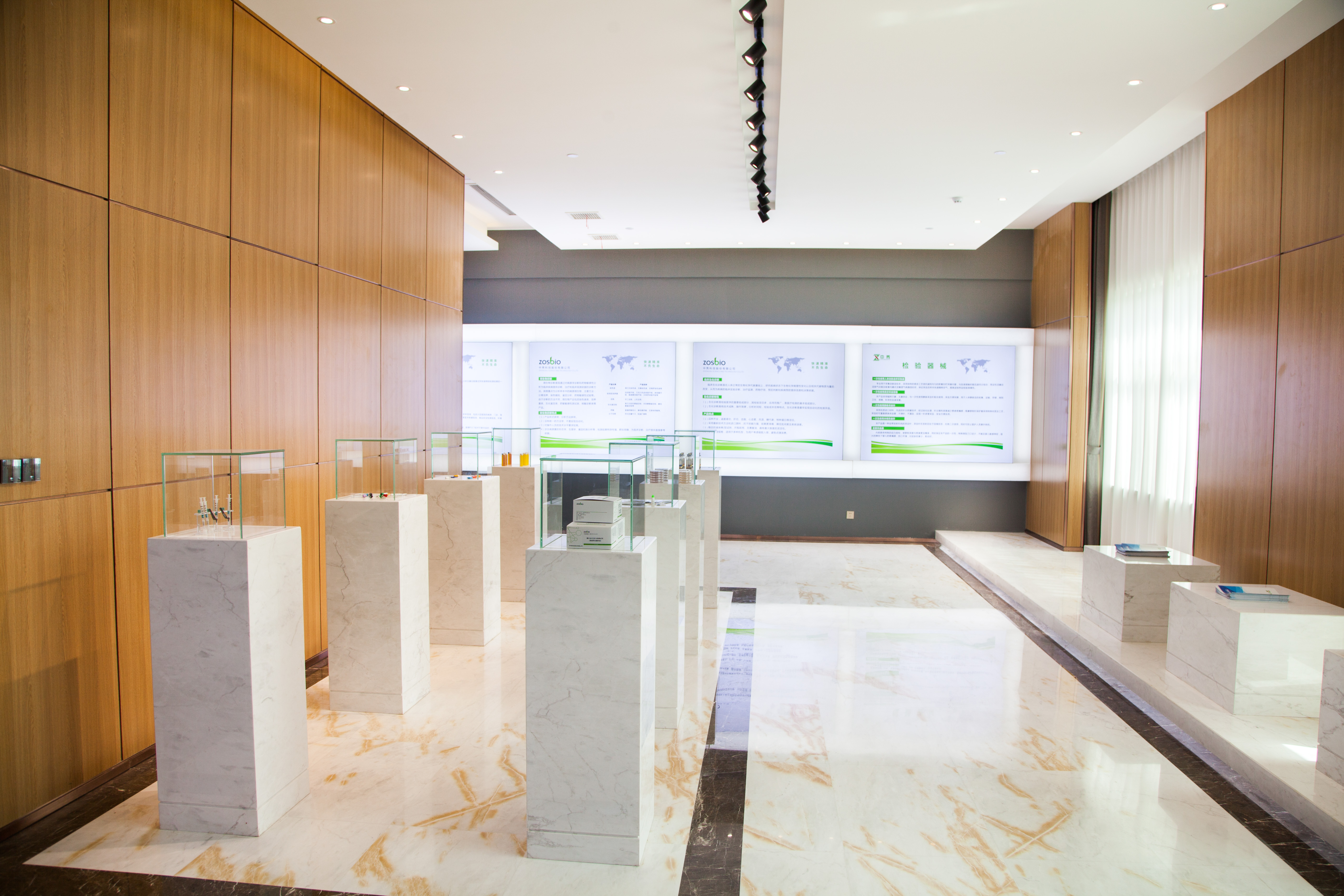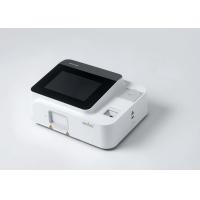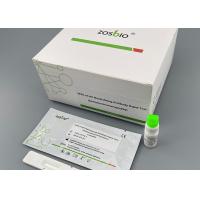Sample Requirements
(1) Saliva sample collection: do not eat or drink chewing gum or
tobacco products within 30 minutes after collecting the saliva
samples.Put the tip of the tongue against the palate and collect
the saliva roots.Place the disposable sterile cotton swab under the
saliva sample.The tongue was used for at least 10 seconds, fully
immersed in the saliva, and rotated more than 5 times.(See Table 1)
Note: If the saliva samples have not been collected correctly.

Figure 1 Methodsfor saliva sample collection

Figure 2 Methods for sputum sample collection
(2) Sputum specimen collection: rinse it with water, cough up the
sputum, put it into the specimen bag, and wipe the specimen with a
disposable sterile cotton swab.(See Figure 2)
(3) Sample treatment: The collected samples shall be treated with
the sample buffer provided in this kit (the samples not processed
immediately shall be stored in dry, sterile and sealed
containers).From 2 to 8 degrees Celsius to 24 hours, longer than-70
degrees Celsius (but avoid repeated freeze and thaw).
Test Method
Read the instructions carefully before testing.All reagents were
put back to room temperature and testing should be performed at
room temperature.
Example processing (see Figure 3).
(1) The sample swab is inserted into the sample buffer and rotates
the sample rotated about 10 times near the inner wall to dissolve
the sample in the solution as much as possible.
(2) Press the swab tip along the inner wall to flow the liquid into
the tube, remove the swab and discard the swab.
(3) Cover it with water droplets.

Figure 3 Sample processing

Figure 4 Test procedure
2. Test process (see Figure 4).
(1) Remove the test card.
(2) Add the addition of 2 drops (approximately 80L) of the treated
sample extract to the sample hole of the test card to start the
timer.
(3) Read the card for 15 minutes at room temperature, and the
results are invalid after 20 minutes.
Interpretation of Test Results
Description of the test card (see Figure 5):
1. Results: Quality control line (line C line) should be rechecked.
2. Negative results: quality control line (C line), red ribbon, and
coloring.
3. Positive results: there are two red stripes in the test line (t
line) and the quality control line (C line).

Figure 5 Interpretation of test results
Limitation of Test Method
1. This product is a qualitative test and is only used to assist in
vitro diagnosis.
2. This product is suitable for saliva and sputum samples, and
other sample types may have inaccurate or invalid sample results.
3. If the patient does not have sputum samples, a nasopharyngeal
swab should be used for testing.
4. Ensure that an appropriate amount of samples is added for
testing.Excessive or excessive samples can lead to inaccurate
results.
5. The test results of this reagent are for clinical reference
only, and should not be used as the only basis for clinical
diagnosis and treatment.After a comprehensive evaluation of all
clinical and laboratory results, the final diagnosis of the disease
was made.
Product Performance Indicators
1. Detection limit: Inactivated sars-cov-2 viral cultures were used
in this study.The minimum detection limit was 6,102 tcid50 / ml.
2. Use the company's standard materials for testing, and the test
results should meet the requirements of the company's standard
materials.
2.1 Qualification rate of positive control: enterprise positive
control p1-p5.
2.2 Qualified rate of negative control: our company n1-n10 negative
control test is negative.
2.3 Detection limit: reference L1-L3, L1 is negative and L2 and L3
are positive.
2.4 Reproducibility: Both J1 and J2 were 10-fold positive.
3. Cross-reaction: The following microbes and viruses were injected
into the samples at the indicated concentrations to assess their
potential interference with the 2019 Novel Coronavirus antigen
detection program.virus
4. Interference: evaluate the potential interference in the
2019-nCoV Ag testing procedure, and add the following drugs
according to the specified concentration.The results showed that
the various drugs did not interfere with the detection results of
the reagents.
5. Hook effect: No hook effect was observed in the 2019-NCOV
inactivated cultures at a high concentration range of 1.0106 TCID50
/ mL.
6. Clinical research: RT-PCR sputum reagent was used as a
comparative reagent to detect saliva and sputum samples,
respectively.For Each sample size (RT-PCR test), 120 positive and
negative samples were selected, and secondary testing was performed
using the XIUS reagent.The study results are summarized as follows:
Precautions
1. This product is used for in vitro diagnosis.
2. This product is a disposable product and cannot be recycled.
3. Operation strictly follow the reagent instructions and read the
instructions carefully before the experiment.
4. Avoid testing in harsh environmental conditions (including high
concentration of corrosive gases, such as 84 disinfectant, dust,
sodium hypochlorite, acid-alkali, or acetaldehyde, etc.).Laboratory
disinfection should be performed after the experiment.
Company profile
Zhongxiu Science And Technology Co.,Ltd., is a high-tech enterprise
engaged in the research and development, production and operation
of in vitro diagnostic products. The in vitro diagnostic products
developed by the company cover POCT series, microbial series,
biochemical series and immune series reagents and supporting
instruments.
The company has always adhered to the core concept of "fast and
accurate, living up to life", committed to providing society with
excellent products and services, and contributing to the cause of
human health.

















